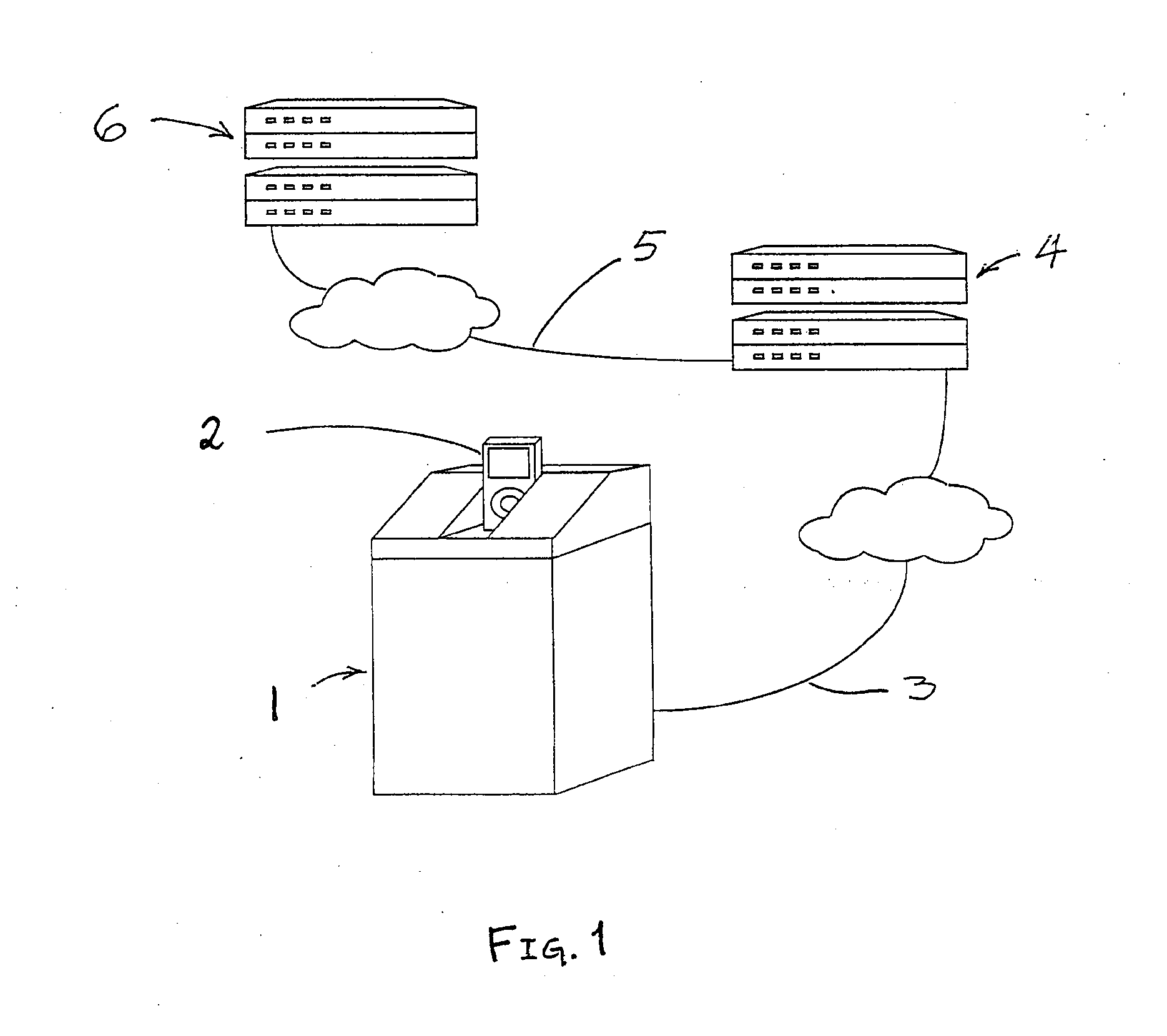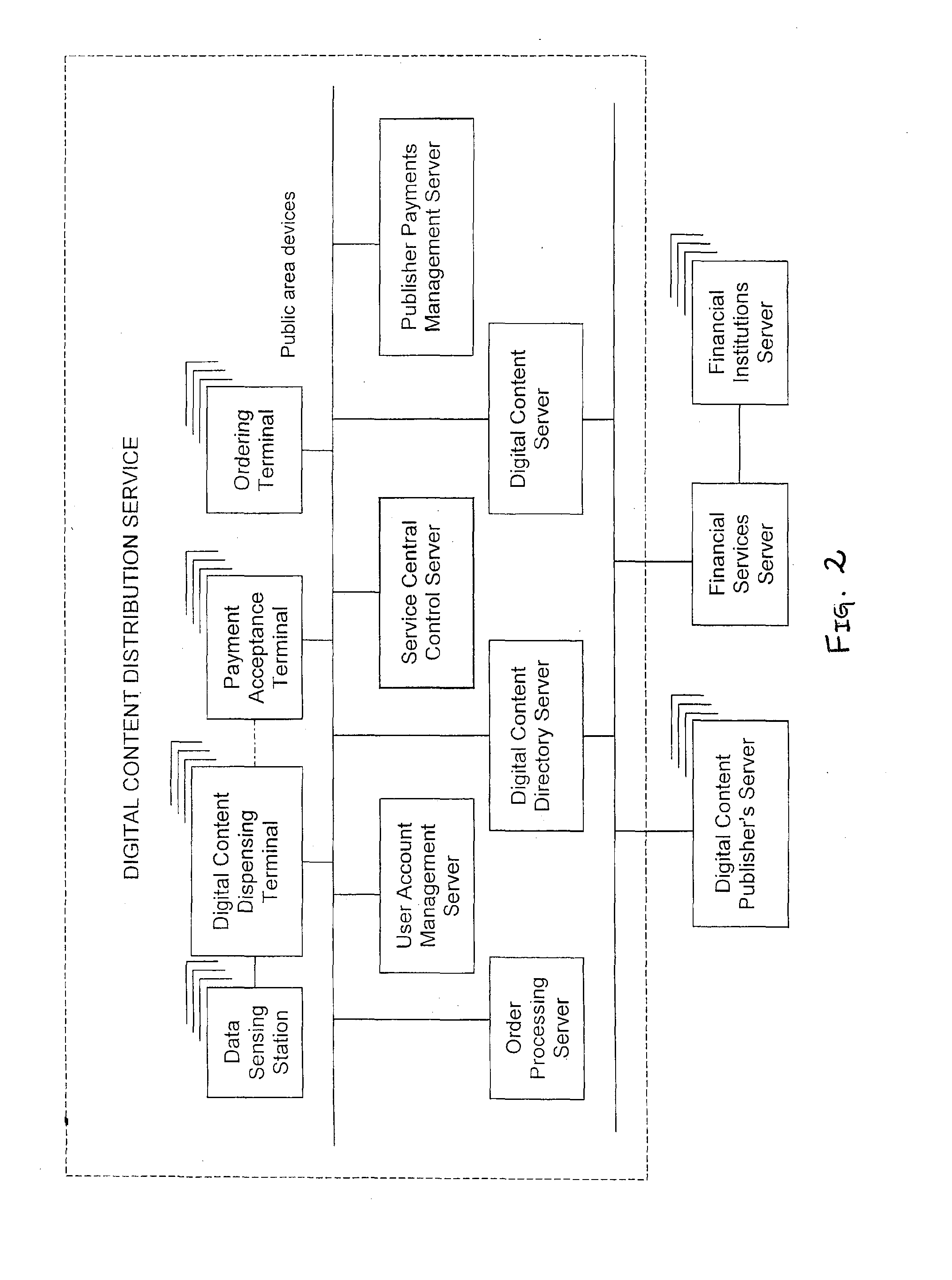Digital Content Distribution System
a technology of digital content and distribution system, applied in the field of digital content distribution system, to achieve the effect of strong competitive position, low capital cost and operating cost, and small spa
- Summary
- Abstract
- Description
- Claims
- Application Information
AI Technical Summary
Benefits of technology
Problems solved by technology
Method used
Image
Examples
first embodiment
[0077]FIG. 7 is a pictorial view of DSU 2 that shows EMM 25 in the process of being inserted into module receptacle 23 while DSU 2 is mounted in the DCDT (not shown). Covers that normally cover openings to module receptacles 23 are not shown.
second embodiment
[0078]FIG. 8 is a pictorial view of DSU 2 that shows EMM 25 in the process of being inserted into module receptacle 23 while DSU 2 is mounted in DCDT 1 (not shown). Covers that normally cover openings to module receptacles 23 are not shown.
third embodiment
[0079]FIG. 9 is a pictorial view of DSU 2 that shows EMM 25 in the process of being inserted into module receptacle 23 while DSU 2 is mounted in DCDT 1 (not shown). Covers that normally cover openings to module receptacles 23 are not shown.
PUM
 Login to View More
Login to View More Abstract
Description
Claims
Application Information
 Login to View More
Login to View More - R&D
- Intellectual Property
- Life Sciences
- Materials
- Tech Scout
- Unparalleled Data Quality
- Higher Quality Content
- 60% Fewer Hallucinations
Browse by: Latest US Patents, China's latest patents, Technical Efficacy Thesaurus, Application Domain, Technology Topic, Popular Technical Reports.
© 2025 PatSnap. All rights reserved.Legal|Privacy policy|Modern Slavery Act Transparency Statement|Sitemap|About US| Contact US: help@patsnap.com



